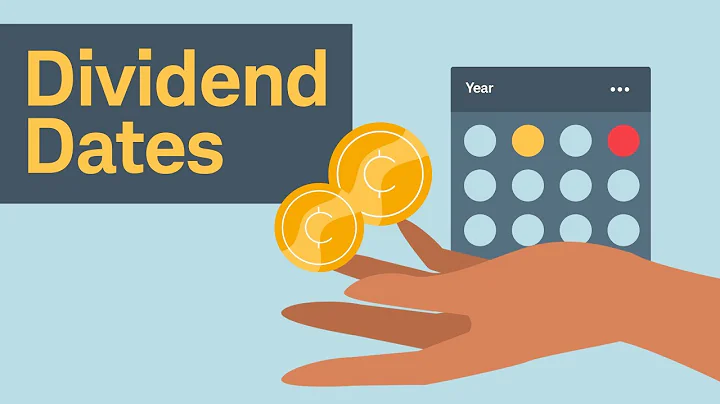Upcoming dividend record dates?
The dividend calendar provides a day-to-day view of stocks which are going Ex-Dividend and which stocks will provide a pay-out to aid investors in projecting ownership requirements and income streams.
The dividend calendar provides a day-to-day view of stocks which are going Ex-Dividend and which stocks will provide a pay-out to aid investors in projecting ownership requirements and income streams.
Dividend declarations often accompany earnings announcements. Existing shareholders receive the declaration information directly from the company, usually by a notice in the mail. Investing information websites regularly publish upcoming ex-dividend dates, along with the amount of the dividend.
When it comes to investing for dividends, there are three key dates that everyone should memorize. The three dates are the date of declaration, date of record, and date of payment.
A company's board will announce dividend payments, and potential buyers can find information about dividends on the investor page of the company's website or through a site like MarketBeat, which features the dividend yield, payment frequency and the history of dividend increases or decreases.
There are four dates to know when it comes to companies' dividends: the declaration date, the ex-dividend date, the record date, and the payable date. On the ex-dividend date, stock prices typically decline by the amount of the dividend.
The stock price drops by the amount of the dividend on the ex-dividend date. Remember, the ex-dividend date is the day before the record date. If investors want to receive a stock's dividend, they have to buy shares of stock before the ex-dividend date.
In order to receive the upcoming dividend, the holder has to own the shares before the ex-dividend date. The minimum 60-day holding period rule also applies to mutual funds. For preferred stocks, the shares have to be held for over 90 days during a 181-day period that begins 90 days before the ex-dividend date.
So, to be eligible for the dividend, you will need to buy the stocks before the ex-dividend date, which generally is two days before the record date. Also, remember it takes T+2 days to get registered and updated, so keep those as buffer days and do not just wait for the last date to buy the stocks.
| Stock | Dividend yield |
|---|---|
| Exxon Mobil Corp. (XOM) | 3.9% |
| National Storage Affiliates Trust (NSA) | 6% |
| Realty Income Corp. (O) | 9% |
| Unum Group (UNM) | 3.2% |
Which company will give dividend in 2023?
Dividend stocks 2023
1] Vedanta: Dividend declared by this company is ₹62.50 per share. In the year 2023, Vedanta declared dividends on four occassions. In 2023, it traded ex-dividend for the first time on 3rd February 2023 for payment of ₹12.50 per share interim dividend.
Dividends can be classified either as ordinary or qualified. Whereas ordinary dividends are taxable as ordinary income, qualified dividends that meet certain requirements are taxed at lower capital gain rates.

While the dividend history of a given stock plays a general role in its popularity, the declaration and payment of dividends also have a specific and predictable effect on market prices. After the ex-dividend date, the share price of a stock usually drops by the amount of the dividend.
The ex-dividend date is generally set two business days before the record date record date. It is a general rule that you must hold the stocks of the company before the ex-dividend date to be eligible for receiving the dividend amount.
Regardless, if you'd like to sell your shares and still get the dividend, hold onto them until the Ex-Dividend Date. Sell on or after the Ex-Dividend Date and you'll still receive the dividend.
Costco Wholesale Corporation's ( COST ) dividend yield is 0.59%, which means that for every $100 invested in the company's stock, investors would receive $0.59 in dividends per year.
If the average dividend yield of your portfolio is 4%, you'd need a substantial investment to generate $3,000 per month. To be precise, you'd need an investment of $900,000. This is calculated as follows: $3,000 X 12 months = $36,000 per year.
For example, if the average yield is 3%, that's what we'll use for our calculations. Keep in mind, yields vary based on the investment. Calculate the Investment Needed: To earn $1,000 per month, or $12,000 per year, at a 3% yield, you'd need to invest a total of about $400,000.
Dividend-paying Stocks
Shares of public companies that split profits with shareholders by paying cash dividends yield between 2% and 6% a year. With that in mind, putting $250,000 into low-yielding dividend stocks or $83,333 into high-yielding shares will get your $500 a month.
- Hindustan Zinc Ltd.
- Tech Mahindra Ltd.
- ITC Ltd.
- GAIL (India) Ltd.
- HCL Technologies Ltd.
When should you sell dividend stocks?
If a company whose stock you own is losing money but still paying a dividend, it may be time to sell. "Dividend payers in financial straits may try to stave off a dividend cut—which can drive away shareholders—by funding payouts with borrowed funds or dwindling cash reserves," Steve says.
Yes — Any sale that occurs on the ex-dividend date or later will exclude the pending dividend. You will still be the owner of record in the company books when they distribute the payment. So, if you sell a stock on the ex-dividend date, you will still get the dividend about two weeks later.
Coincidentally, Coca-Cola has an almost identical valuation to P&G, with a P/E ratio of 23.9 and a price-to-FCF ratio of 25.4. The difference is that co*ke would have to nearly double to reach $500 billion in market size. co*ke is a worthy dividend stock with a solid 3.1% yield.
- Realty Income (O)
- AT&T (T)
- Medtronic (MDT)
Microsoft Corporation (NASDAQ:MSFT), Visa Inc. (NYSE:V), and Apple Inc. (NASDAQ:AAPL) are some of the best dividend-paying stocks that have consistently attracted investors' interest throughout the years.